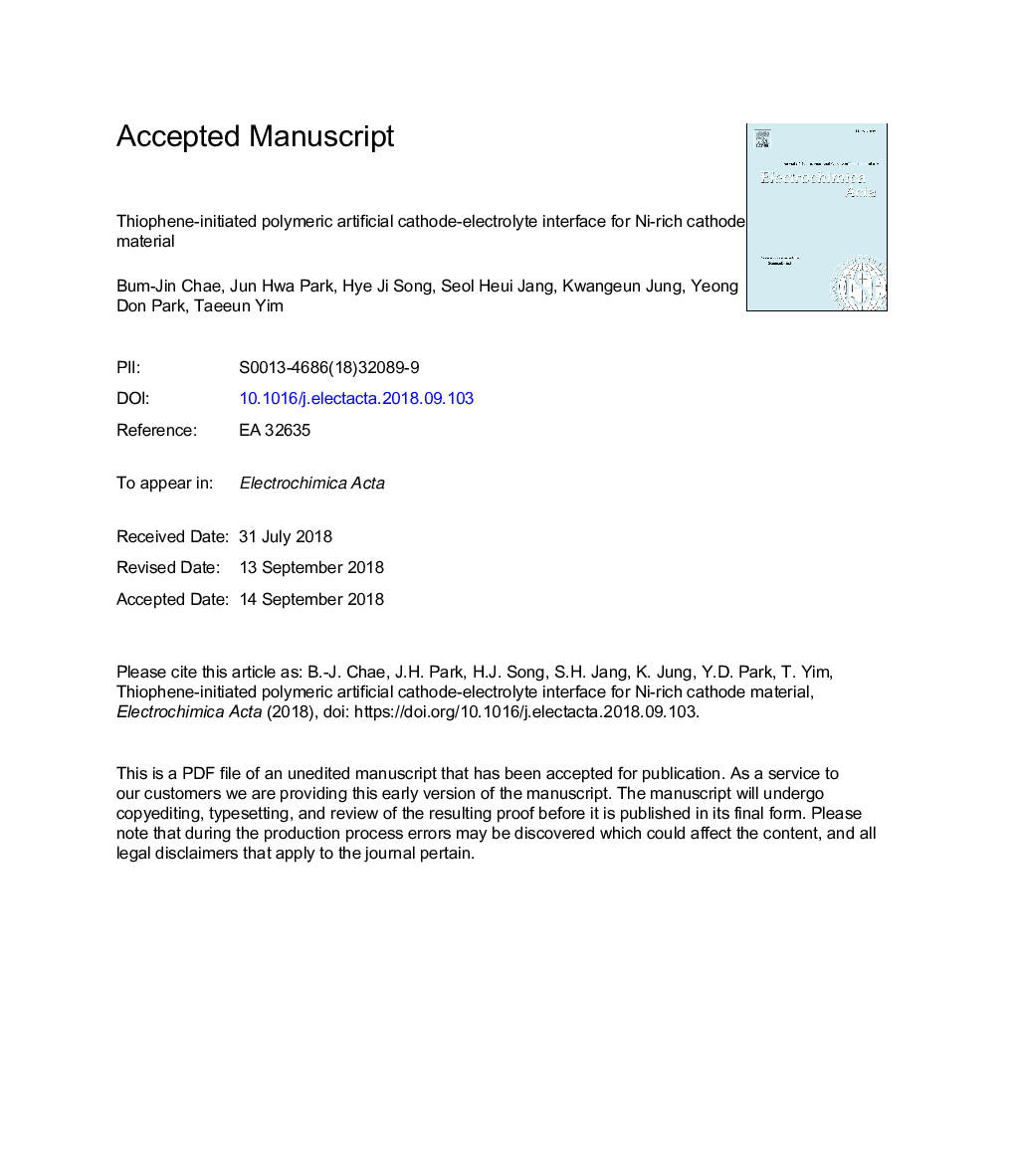| Article ID | Journal | Published Year | Pages | File Type |
|---|---|---|---|---|
| 11028284 | Electrochimica Acta | 2018 | 34 Pages |
Abstract
Ni-rich layered oxide (Ni-rich NCM) is a promising advanced cathode material for lithium-ion batteries (LIBs) because of its high specific capacity. However, the high Ni content in the layered structures is associated with poor surface stability, which in turn accelerates the capacity fading of the cell. To improve the interfacial stability of Ni-rich NCM cathode material, we propose poly(thiophene)-based artificial cathode-electrolyte interphase (CEI)-immobilized Ni-rich NCM cathode material, synthesized using a simple and convenient one-step spin-coating process. At room-temperature cycling, cells with thiophene-modified NCM811 cathodes exhibit improved cycling retention (>91.3%), compared those with bare NCM811 (84.2%). The effectiveness of the artificial CEI layer is evident during high-temperature cycling: cells with 36â¯kDa-NCM811 exhibit a specific capacity retention of 89.4%, whereas those with bare NCM811 exhibit a drastic decrease in the cycling retention capacity (55.1%) at 55â¯Â°C. XPS analyses reveal that the improved electrochemical performance of cells with cycled NCM811 cathodes is due to the surface stability of the cathode; the decomposed adducts in the recovered 36â¯kDa-NCM811 cathodes are less, whereas they are present in considerable amounts in the cycled NCM811 cathode. In addition, it is confirmed that the molecular weight of the polymer used for the artificial CEI-layer formation significantly affects the electrochemical performance of the cell; polymers with low molecular weights are preferred because P3HTs with low molecular weight have high crystallinity with a hard phase, particularly at high temperature, due to their low Tg.
Related Topics
Physical Sciences and Engineering
Chemical Engineering
Chemical Engineering (General)
Authors
Bum-Jin Chae, Jun Hwa Park, Hye Ji Song, Seol Heui Jang, Kwangeun Jung, Yeong Don Park, Taeeun Yim,
